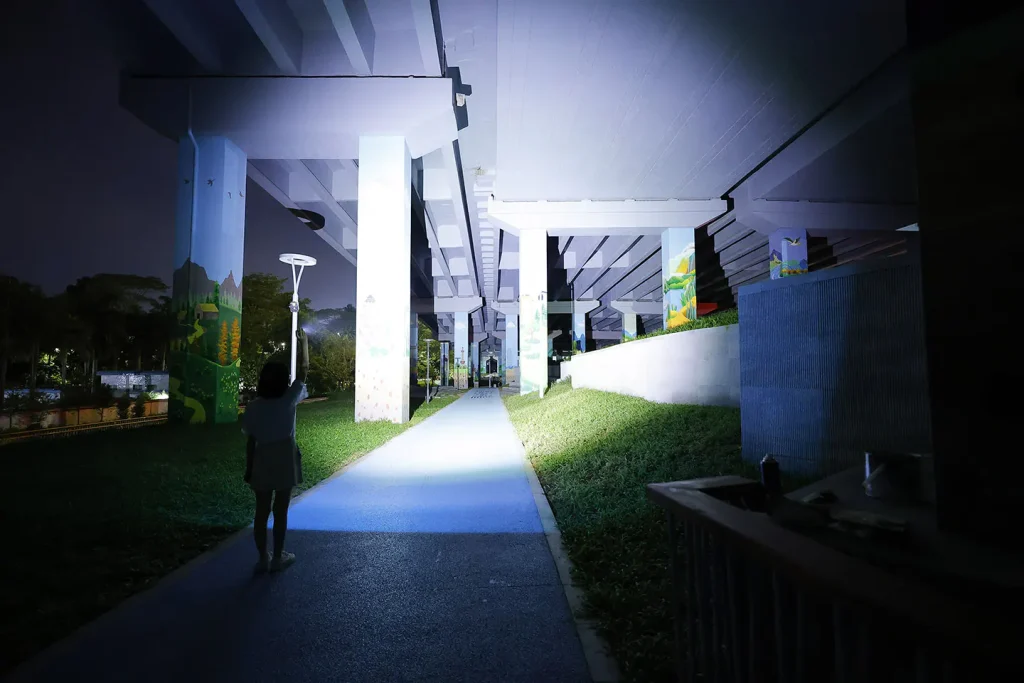


When it comes to choosing the right flashlight, it’s easy to get into the weeds with technical jargon once you start getting into the online forums, but understanding these terms like lumens, candela, flood and throw can help you make smarter choices, whether you’re prepping for emergencies, tackling outdoor adventures or outfitting your everyday carry (EDC) kit. Let’s walk through these things in plain English.
Lumens are the most talked-about measurement in the flashlight world. Luminosity, measured in lumens, refers to the total amount of light emitted from the flashlight’s emitter. An emitter is the modern term for what we used to call “the bulb” (although with today’s LED technology, they’re far from the glass-and-filament contraptions of old). The more lumens a flashlight has the brighter the overall light output.
Lumens get most of the attention in the consumer flashlight world, but they don’t tell the whole story. Think about the same 500 horsepower in a Ford Mustang vs a Ford F350 Turbo Diesel… an entirely different driving experience. Light emission is similar: we need to think about the intensity and focus of light emission in addition to the total volume of light emission because you can have a very different flashlight experience with the same lumens, depending on how the beam is focused. For that, we need to talk about candela.
Candela measures the intensity of light in a specific direction. To visualize the difference between lumens and candela, imagine a garden hose. Lumens are like the total volume of water flowing through the hose, while candela is the pressure at the nozzle. The same amount of water (or light) can create a gentle mist or a high-powered jet, depending on how it’s focused.
Candela is particularly important when you need a flashlight to shine light over a long distance. A high-candela flashlight will produce a tight, focused beam capable of “throwing” light far ahead, whereas a lower-candela light will scatter its beam more widely, creating a “flood” effect. This brings us to the next important concept: beam profiles.
The terms flood and throw describe the shape and reach of a flashlight’s beam. A floody light creates a wide, even pattern that illuminates a large area but doesn’t travel very far. It’s ideal for indoor use, short-range tasks, or situations where you need to light up a broad area—think searching for something under the couch or navigating a dark basement during a power outage. Most consumer-grade flashlights, like those found at hardware stores, fall into this category.
A throwy light, on the other hand, produces a narrow, focused beam designed to illuminate objects at long distances. This beam pattern is critical for outdoor or tactical applications, where you might need to spot a potential threat hundreds of feet away. For example, our own flagship flashlight boasts an extreme throw capable of punching through the darkness up to three city blocks. This level of performance is rarely seen in the civilian market, making it a game-changer for anyone who takes their flashlight seriously.
Not all flashlights are created equal, and the best choice depends on how you plan to use it. For most people out there, a flashlight is a backup tool—something to keep in a drawer or glove compartment in case of an emergency. But for others, probably like you if you’re reading this power, it’s an essential piece of gear, whether for everyday convenience or defensive purposes.
Here’s where the debate on EDC flashlights gets interesting. There are two schools of thought:
Another important distinction is the role of handheld flashlights versus weapon-mounted lights. A handheld flashlight is versatile, doubling as a tool for both administrative and defensive tasks. It’s also portable, meaning you can use it independently of any firearm.
A weapon-mounted light, however, is purpose-built for defensive scenarios: it allows you to illuminate a target while keeping both hands on your firearm. While these lights excel in their specific role, they’re single-application tools and, therefore, less versatile than handheld options. For many gun owners, the ideal setup includes both a reliable EDC handheld for everyday use and a weapon-mounted light for home defense or more tactical applications.
Flashlights, like any other tool, are most effective when tailored to the task at hand. Whether you’re looking for a compact light to keep on your keychain or a high-performance thrower for defensive scenarios, understanding the basics of lumens, candela, flood and throw will help you make an informed decision.
Remember, the best flashlight is the one that fits your needs. If you’re looking for an EDC light, if it’s not comfortable and convenient to carry, you’re not going to.